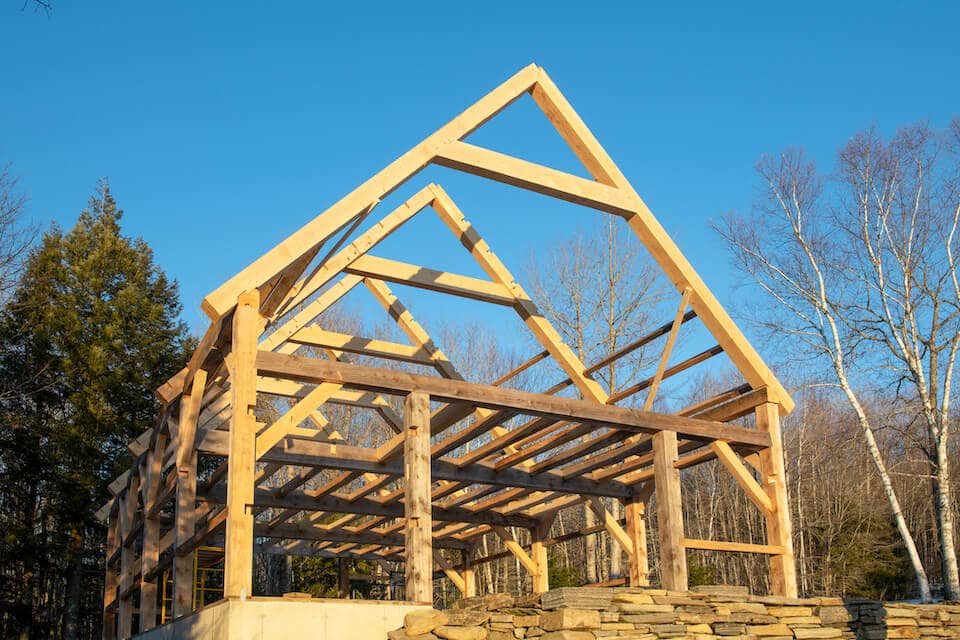
When deciding between a pole barn and a timber frame structure, it's essential to understand the differences in construction, materials, durability, and usage.
Pole Barns:
- Construction Method: Pole barns are built using a post-frame construction technique where poles are embedded into the ground, serving as the primary structural support. This method eliminates the need for a continuous foundation, allowing for more flexible site placement and reduced site preparation costs.
- Materials: Typically, pole barns use standard, pressure-treated lumber or steel for their frames. The exterior is often finished with metal or tin roofing and siding, making these structures economical and quick to build.
- Durability and Lifespan: While pole barns are cost-effective and can be constructed rapidly, they generally have a shorter lifespan than timber frame structures. The poles can shift as the ground settles, potentially leading to structural issues.
- Uses: Pole barns are versatile and can be utilized for various purposes, including agricultural storage, livestock housing, workshops, and more. They are particularly suited for large, open interior spaces without needing interior load-bearing walls.
Timber Frame Structures:
- Construction Method: Timber frame buildings utilize large, carefully joined timbers, often secured with traditional wooden pegs. This method, known as mortise and tenon joinery, provides a robust and durable frame capable of lasting for centuries.
- Materials: These structures, such as Douglas fir, are built with high-quality timbers and are custom-milled for each project. This choice of materials contributes to both the aesthetic appeal and structural strength of the building.
- Durability and Lifespan: Timber frames are renowned for their longevity and resilience against extreme weather conditions, making them an excellent choice for long-term structures. The robust construction ensures that these buildings can endure for generations.
- Uses: Timber frame structures are ideal for residential homes, barns, and commercial buildings. They offer a unique architectural style combined with functional durability. The absence of interior load-bearing walls allows for flexible and open interior designs.
Choosing the Right Option:
The decision between a pole barn and a timber frame structure should consider factors such as budget, intended use, and the desired lifespan of the building. Pole barns offer a cost-effective and quick solution for functional structures, making them suitable for temporary or utilitarian purposes. In contrast, timber frame structures, though more expensive, provide superior durability and aesthetic appeal, making them ideal for permanent, visually striking buildings.
By understanding these distinctions, you can make an informed decision that best suits your needs and long-term plans.
Trying to plan a timber frame cabin but running into a problem with the building inspector. He is adamant that all exterior walls must be constructed of graded lumber, even if it’s infill between the timbers. I haven’t had any luck finding information in the UBC to counter him with. Spoke to a lawyer in Lynchburg Va and he said they had similar problems over there. I also raised the option of insulated panels but he won’t budge from sips. My goal is to build with trees harvested from the property and doing my own milling etc. can you offer any insights or references? I suspect this is a problem in areas other than mine.
This is very common and is not allowed because they are not graded stamped, so they do not know the values of the wood being used, even though it is better than a graded 2×4. You can get your lumber stamped/grade by an company that does that. A company that does that is https://www.tpinspection.com/. You can also get more info on the process is https://woodmizer.com/us/how-to-get-your-lumber-grade-stamped.